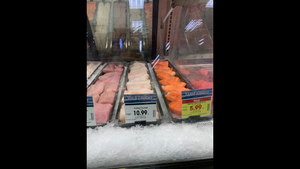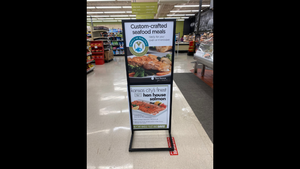'Fighting Inflation is in our DNA': Walmart Seizes on Its Strengths
President and CEO Doug McMillon on what's giving Walmart muscle as the holiday season ramps up. Consumers all-too-familiar with the "prices up, inventories down" storyline look to Walmart for lower prices and bigger assortments, company executives say—and that's been a boon for grocery and other categories.

Bigger isn't always better, but it's definitely an advantage in security and moving inventory this holiday season.
"We're ready," Walmart Inc. President and CEO Doug McMillon said (twice) in reviewing the company's head-turning third-quarter results in an earnings call with investors and analysts Tuesday. As the holiday shopping season ramps up, Walmart's U.S. inventory is up 11.5% vs. year-ago levels, McMillon noted.
Repeating what the Bentonville, Ark.-based retailer has stated previously about the status of its supply chains, McMillon and other Walmart leaders said that the company's use of chartered ships, a buy-early strategy and an extensive domestic infrastructure for moving products around quickly have positioned the company well to meet surging consumer demand. And surge it has: Walmart U.S. comp sales were up 9.2% in the third quarter of fiscal 2022, and transactions climbed 5.7%. Sam's Club, which saw comps rise 13.9%, also posted its fifth consecutive quarter of double-digit growth in membership income (up 11.3%).
Inflation factored into sales growth, Walmart executives acknowledged, but "our cost inflation is higher than our retail inflation, and that's what we want," McMillon said.
And even as prices climb throughout the U.S. economy for everyday essentials and big-ticket items alike, consumers generally have strong balance sheets heading into the holidays, Walmart U.S. CEO John Furner said—and they're eager to celebrate. Sam's Club CEO Kath McLay said that the warehouse club had observed the phenomenon at Halloween: With costumes, for example, "We set them [early] and we sold through them," she said.
Further, customers are turning to Walmart and Sam's Club stores expecting to experience less sticker shock there than they might elsewhere, company officials said. "Fighting inflation is in our DNA," McMillon said, and customers "trust us to have what they’re looking for and at the right prices." In a Q&A session, Furner noted Walmart's commitment to be "the last to go up" on pricing.
That commitment has helped Walmart continue to take share in grocery, company leaders indicated. Beyond sales growth in grocery—around 10%, the company's strongest in six quarters—Walmart has seen unit share gains on a two-year stack. "We're really proud of the two-year results in food," Furner said, adding, "Our unit growth in grocery is growing faster than dollars."
With U.S. comps representing "remarkable growth," transactions increasing, inventory levels improving and further speed and capacity being built into the supply chain, "I like what I see in the core of the business," McMillon said. And as Walmart moves forward with capacity and automation investments, non-store sources of revenue and other "things that will continue to enable us to grow regardless of the environment, he said, "We’ve got a lot of runway in front of us."
Read more about:
WalmartAbout the Author
You May Also Like






